Val Francilia, a metropolitan transformation
location
Aulnay-sous-Bois / France
client
Ville d’Aulnay-sous-Bois
mission
masterplan
program
11.000 jobs + 3.300 residential units + 15 hectares of parcs + campus of 2.000 students + 1.530 parking space in silos + 28.000 m² of shops + 1 gymnasium + 1 highschool + 2 schools
area
187 ha
team
Richez_Associés (leader) + Atelier Villes et Paysages + Egis Villes et Transports + Cronos Conseil + Elioth + Acoustb
sustainable development profile
_ permeable soils
_ managing polluted soils
_ returning nature within the site, establishing connections with the Ballanger Parc, the Sausset Parc and the agricultural plain
_ sound disturbance management (from airports and highways)
_ energy management and logistics
_ facilitating active mobilities in relation to the future Grand Paris Express line 16
Press
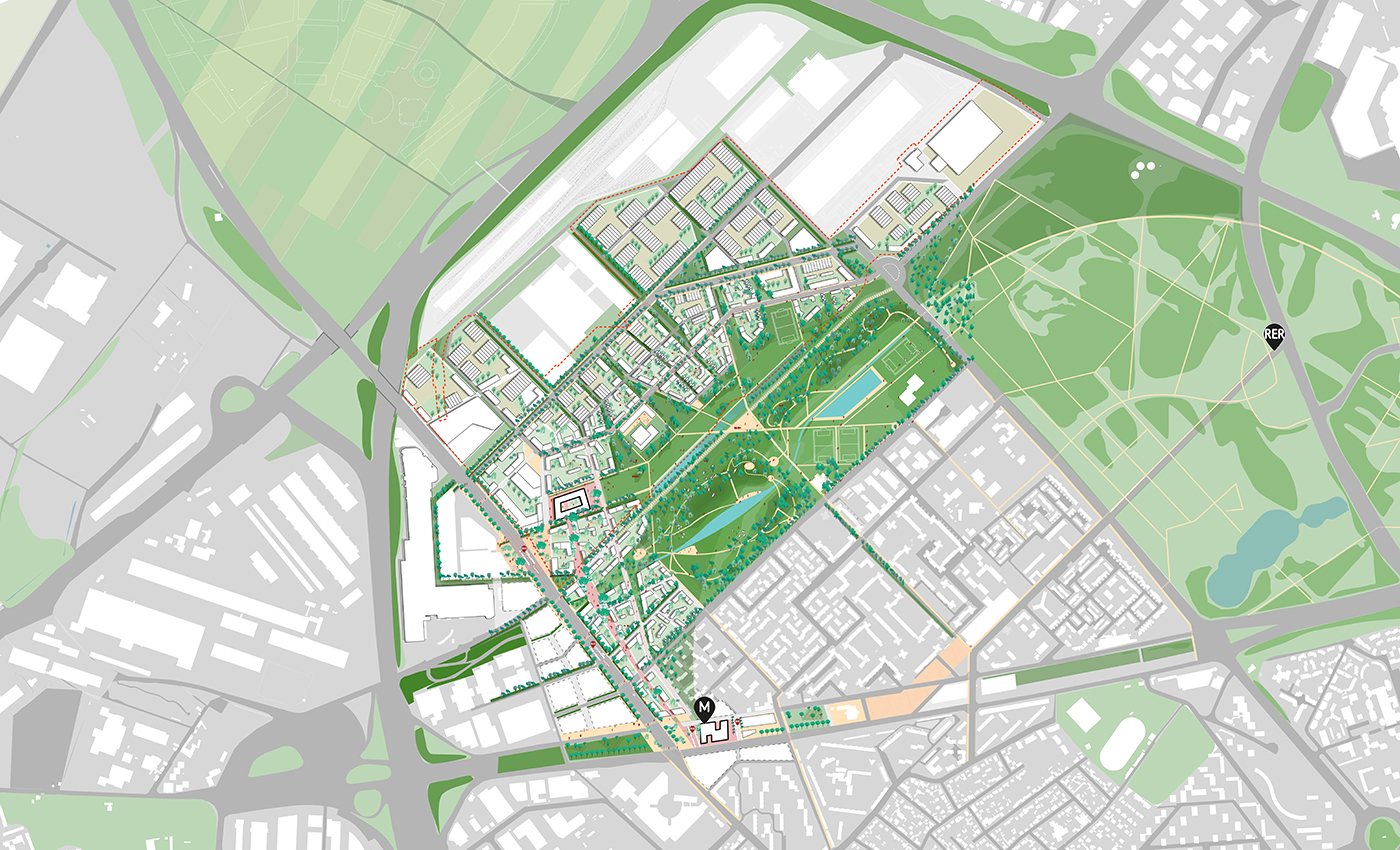
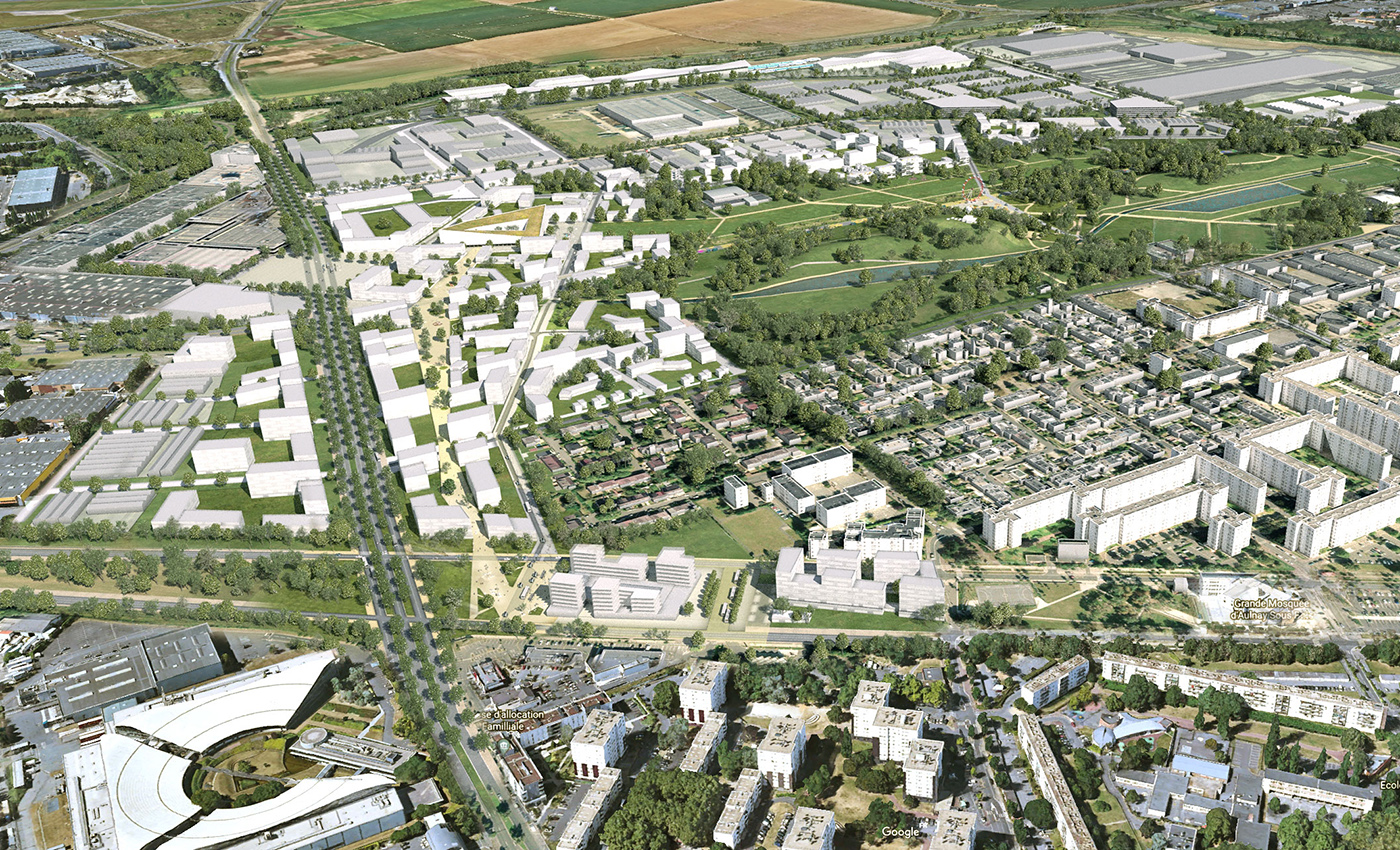
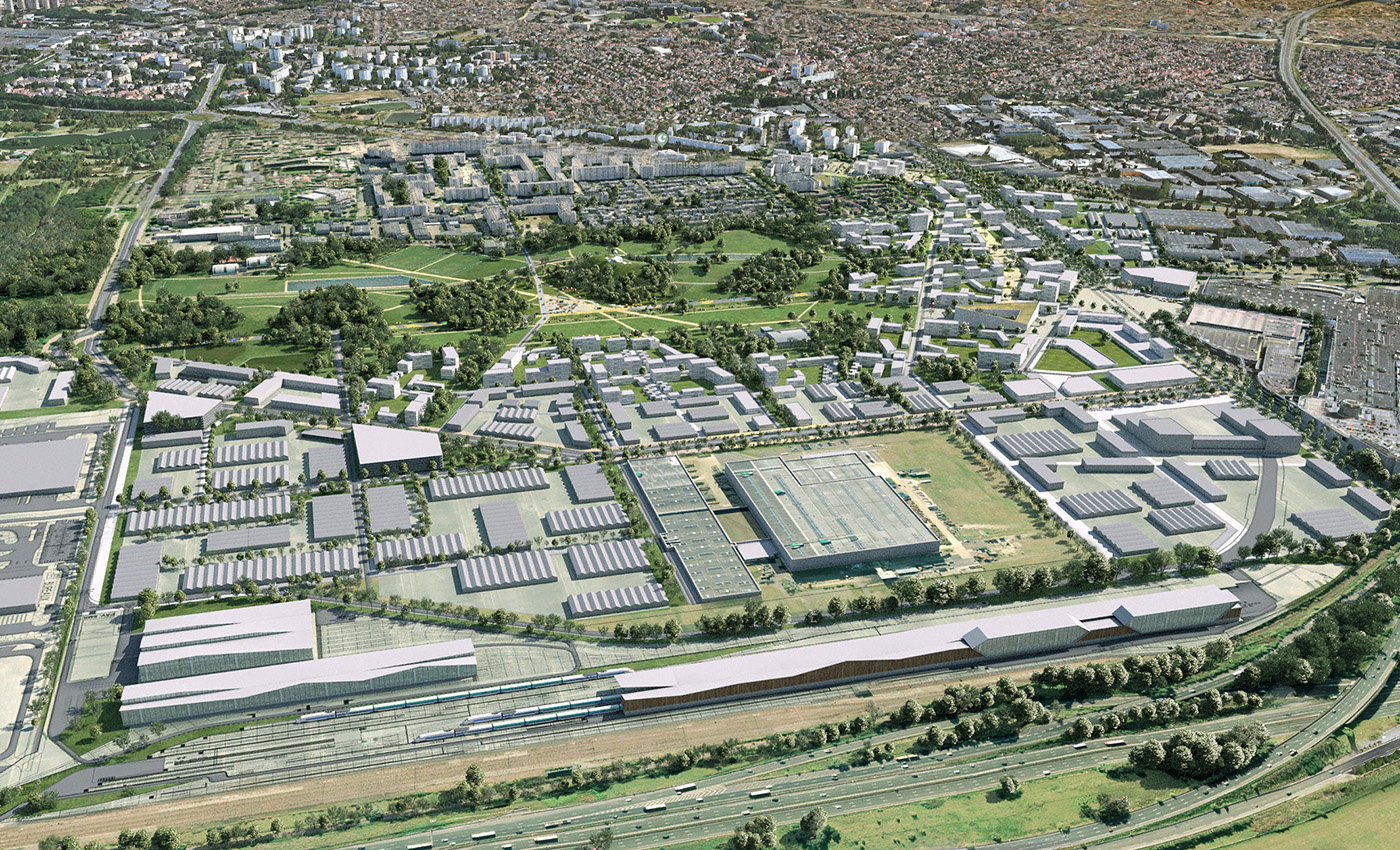
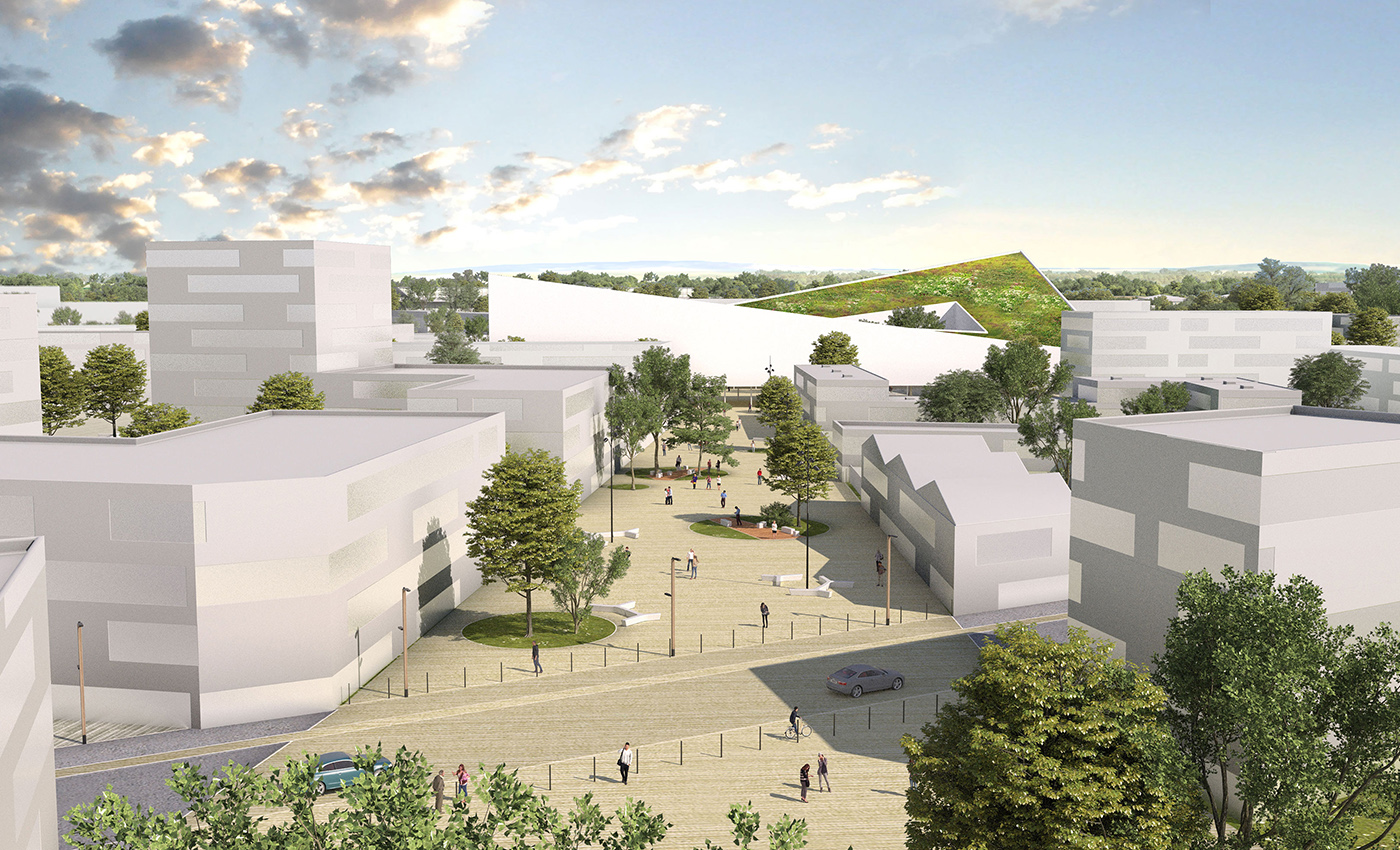
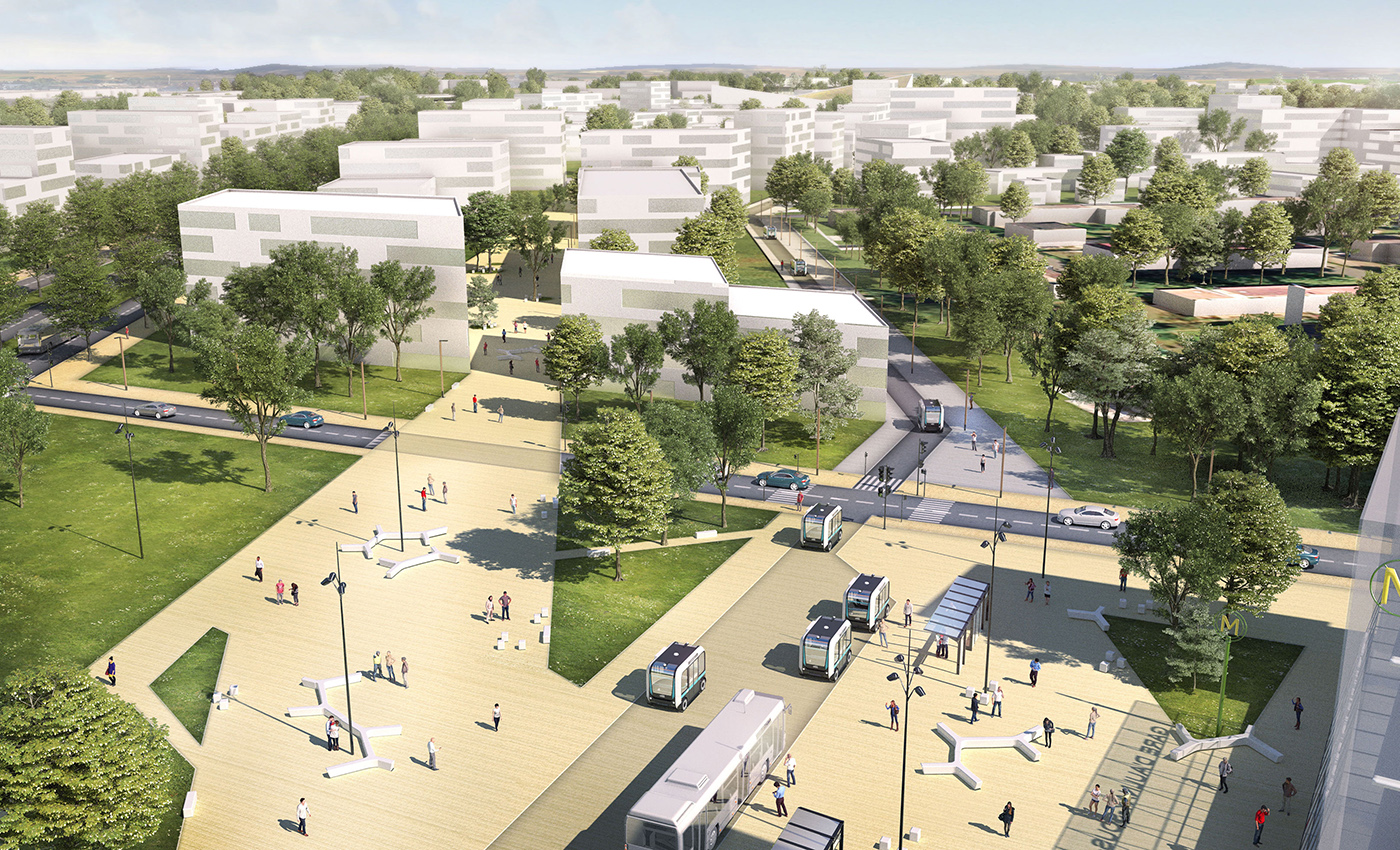
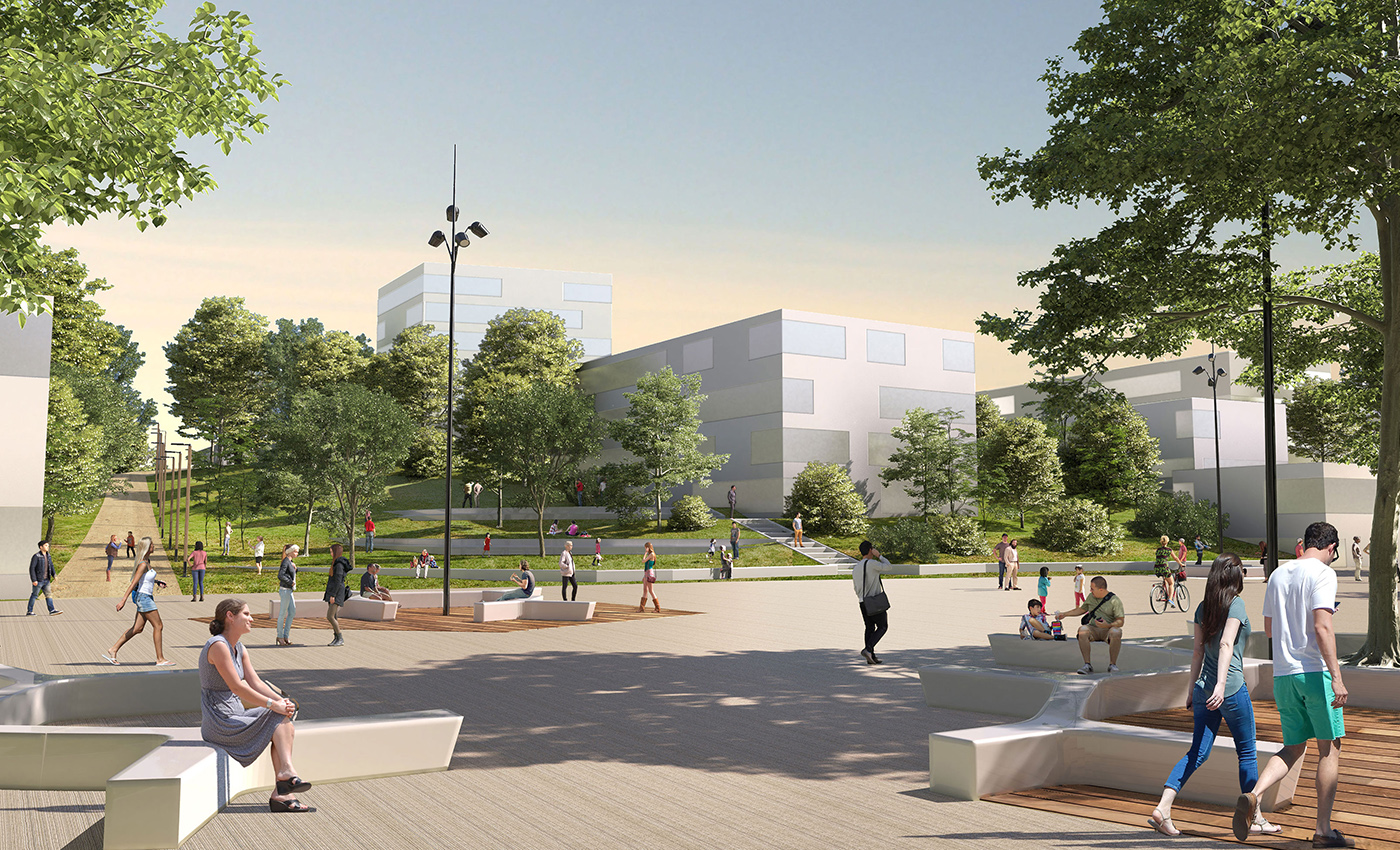
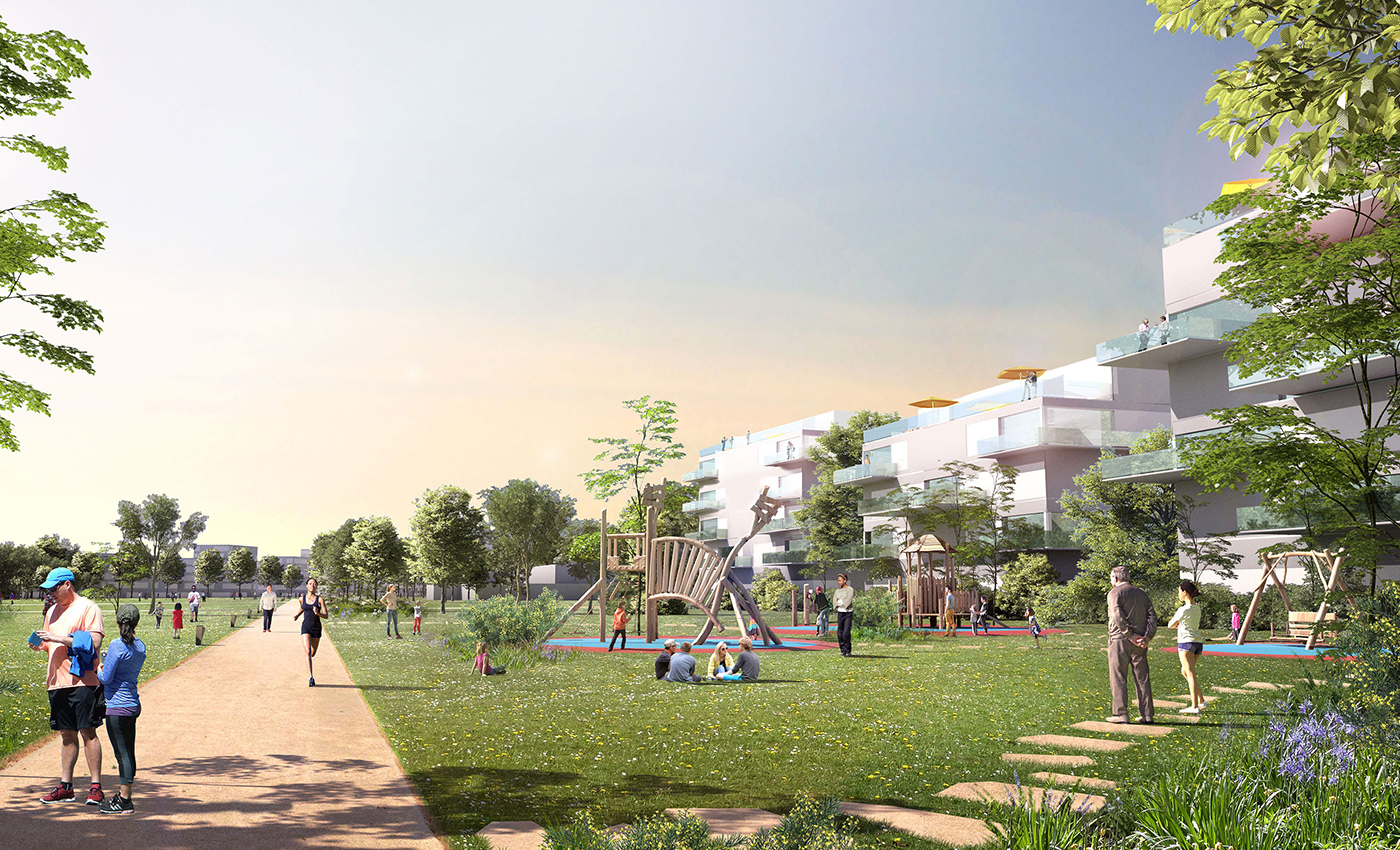
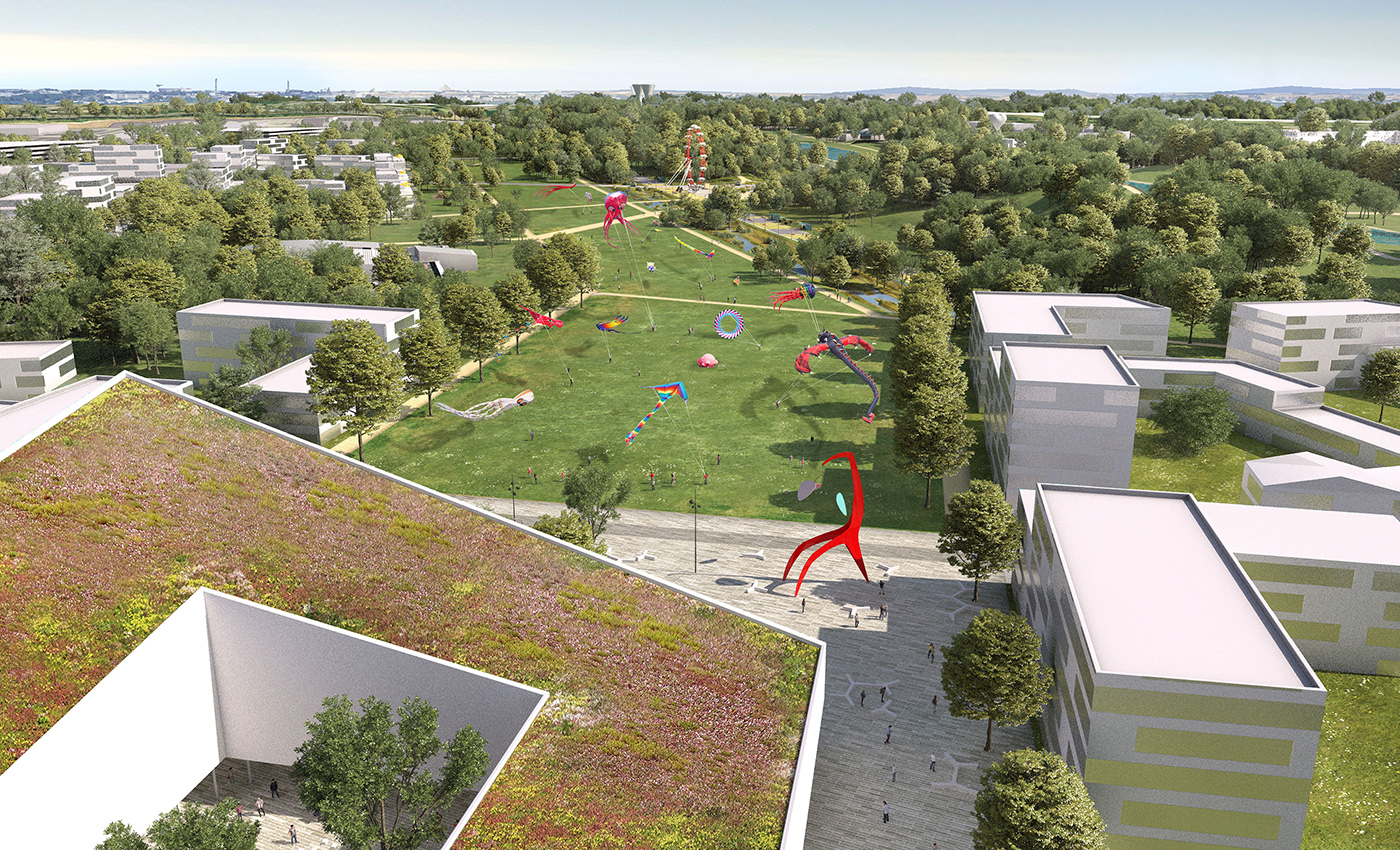
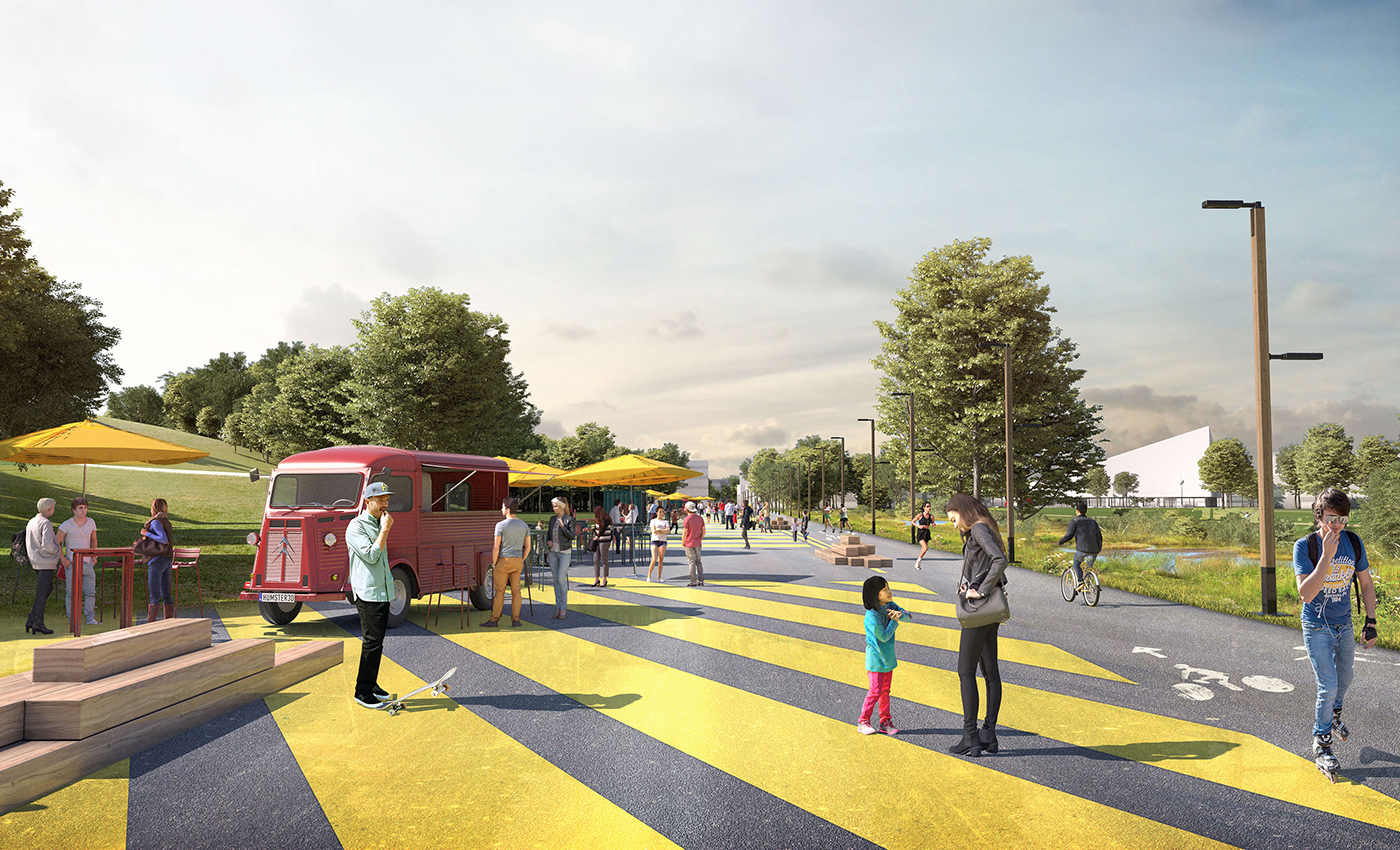
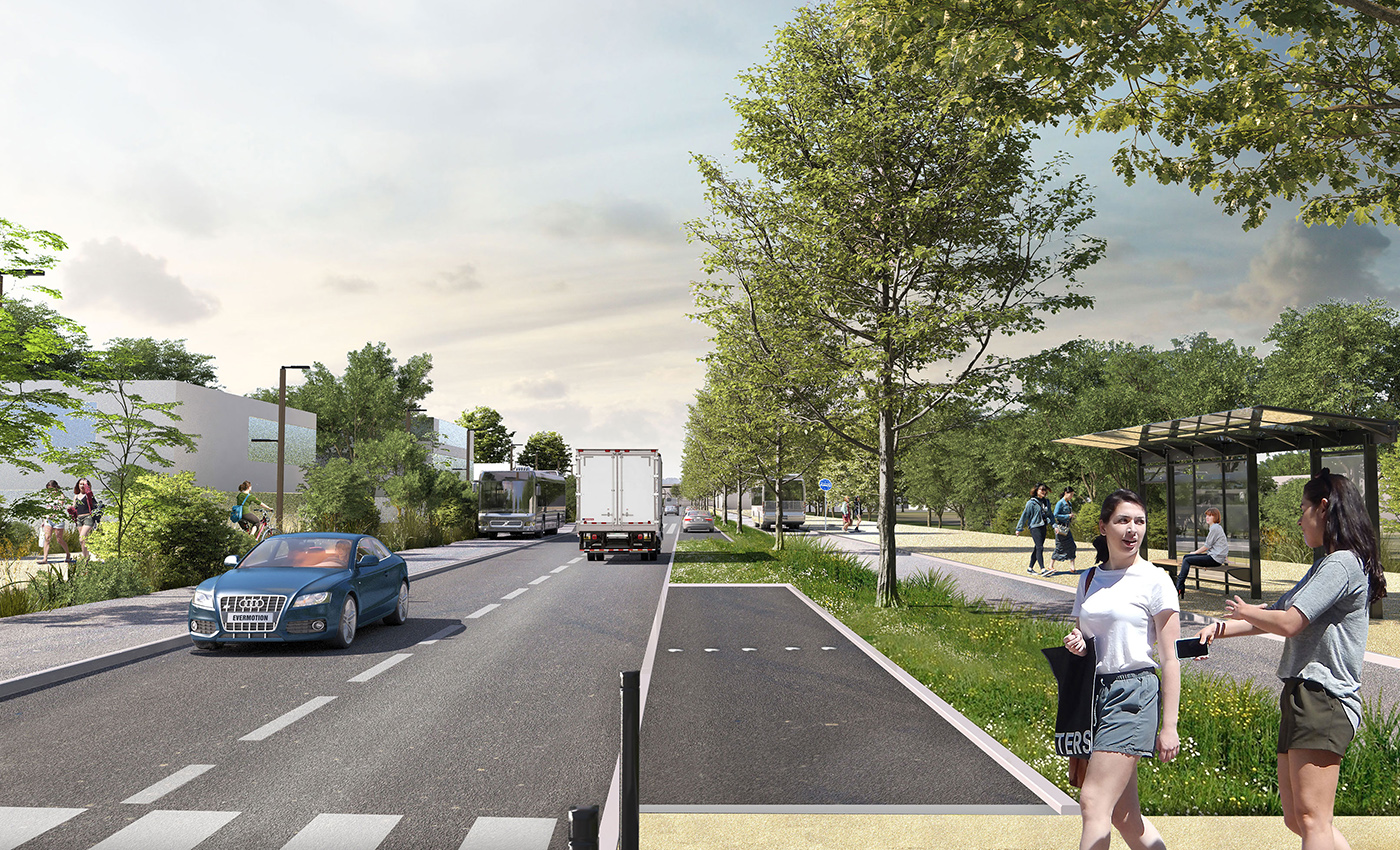
The transformation of the previous PSA factories must usher the invention of a new urban dynamic for the city’s northern neighbourhoods. The necessary cross of project scales, the multiplication of interfaces induced by the growing number of urban relations, will be the main levers of the creation of a new part of the city, capable of articulating all functions, working out their complementarities in order to create a liveable space.
The fundamental task of designing urban articulations will allow the advent of a new inter-neighbourhood scale between the northern and southern edges of the Ballanger Park, in tension between the existing RER train station and the future Grand Paris Express station. In this diverse city, a setting of hyper-mobility, two primary actions remain indispensable to the site’s urbanisation: fertilising a ground that was made artificial and bare, and appeasing an urban organisation that was designed accoding to an exclusively car-driven model.


